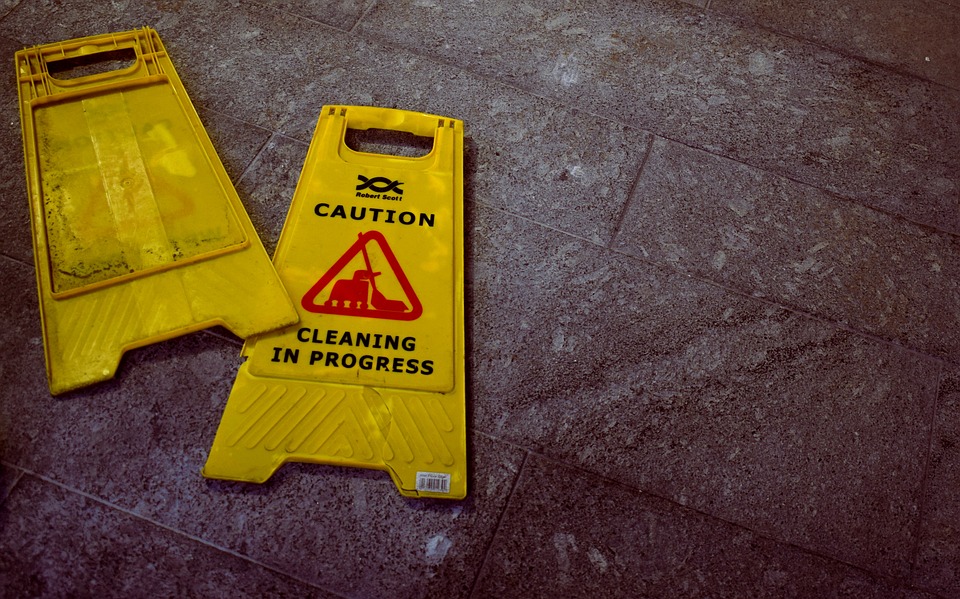


Whether you are looking to create a risk assessment for the first time, or just simply want to brush up on the steps involved, either way you're in the right place!
Our easy to follow guide will help you to understand what a risk assessment is and highlight the five steps that you should follow when creating one, as outlined by the HSE (Health and Safety Executive).
Before we dive in to the five steps, let's first briefly recap what a risk assessment is and its purpose.
In short, a risk assessment is an examination of a given task that you undertake at work, that could potentially cause harm to people.
The goal is to understand any potential hazards, before then outlining and undertaking reasonable steps to prevent harm. Therefore, a risk assessment can help you to understand and take precautions for such eventualities.
Finally, remember that some regulations will likely require certain control measures to be put in place, see step 3 for more information on this.
If you need help creating a risk assessment, then be sure to use our free risk assessment template online or download our free app to streamline the process, and undertake risk assessments wherever you may be
Below are the five steps to risk assessment, as outlined by the HSE. These steps should be adhered to when creating a risk assessment.
Workplace hazards can come in many forms, such as physical, mental, chemical, and biological, to name just a few.
Hazards can be identified by using a number of techniques, although, one of the most common remains walking around the workplace to see first-hand any processes, activities, or substances that may injure or cause harm to employees.
Of course, if you work in the same environment every day, then you may miss some hazards, therefore, the HSE also recommend looking at and considering;
Identifying who may be at risk extends to full and part-time employees, contract staff, visitors, clients, and other members of the public at the workplace.
You should also consider people that may not be in the office all the time or at different times, such as employees working night shifts for example, and lone workers.
For each hazard you will need to understand who may be harmed, this of course, will help you to identify preventive measures for controlling a given risk.
Once you've identified hazards, the next logical step it to completely remove the associated risks, however, where this is not possible, then certain control measures should be put in place.
For example, if an employee is a cleaner, then they'll inevitably come into contact with chemicals. The likelihood is that such a hazard can not be removed, however, certain control measures, such as providing protective gloves, mops, and even training for safely storing and handling cleaning chemicals can and should be in place.
Below is an example of just some hazards, which can easily be applied to risk assessments using our risk assessment template and award winning safety app.
The HSE recommend that you should record your significant findings. Such findings will include, the hazards, how people may be harmed by them, and essentially the control measures that you have implemented.
It's worth highlighting that currently only organisations with five or more staff are required to record in writing the findings of a given risk assessment, regardless, it's still good practice to have a reference.
Recording your findings does not need to be a lengthy exercise, in fact, the HSE currently states "For most people this does not need to be a big exercise - just note the main points down about the significant risks and what you concluded ".
Last, but not least, reviewing the risk assessment. Overtime workplaces will change there may be new equipment, substances, and or tasks, that have been introduced since the last assessment took place. With this in mind, it's recommended that you look back on past risk assessments and consider if there have since been significant changes, and if so, are there new hazards, and or control measures that should be introduced?
Note: the information provided in this article derives from the HSE, and is correct at the time of publishing. The information here is provided as a guide and as general background information, this article should not be taken as legal advice.
 Carla Crocombe is the Founder and Managing Director of Safety Rocks Limited. She is an experienced occupational health and safety professional, alongside being a dedicated tutor. Carla regularly presents webinars and events as a specialist in her field. Safety Rocks Limited delivers bespoke in-company health, safety, environmental and management training with the objectives of improving safety culture, reducing accidents and incidents, increasing employee engagement and ultimately saving companies time and money".
Carla Crocombe is the Founder and Managing Director of Safety Rocks Limited. She is an experienced occupational health and safety professional, alongside being a dedicated tutor. Carla regularly presents webinars and events as a specialist in her field. Safety Rocks Limited delivers bespoke in-company health, safety, environmental and management training with the objectives of improving safety culture, reducing accidents and incidents, increasing employee engagement and ultimately saving companies time and money".